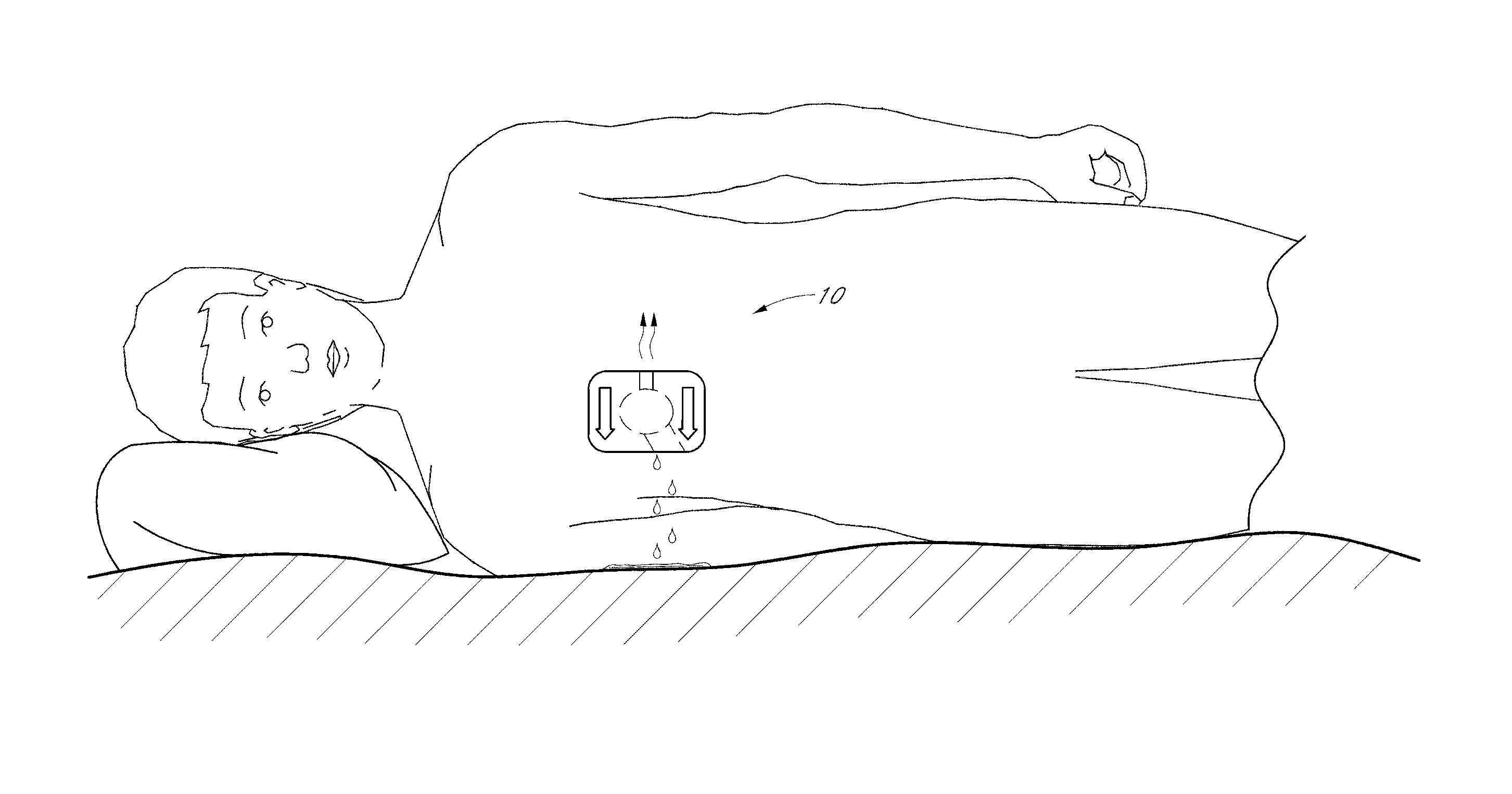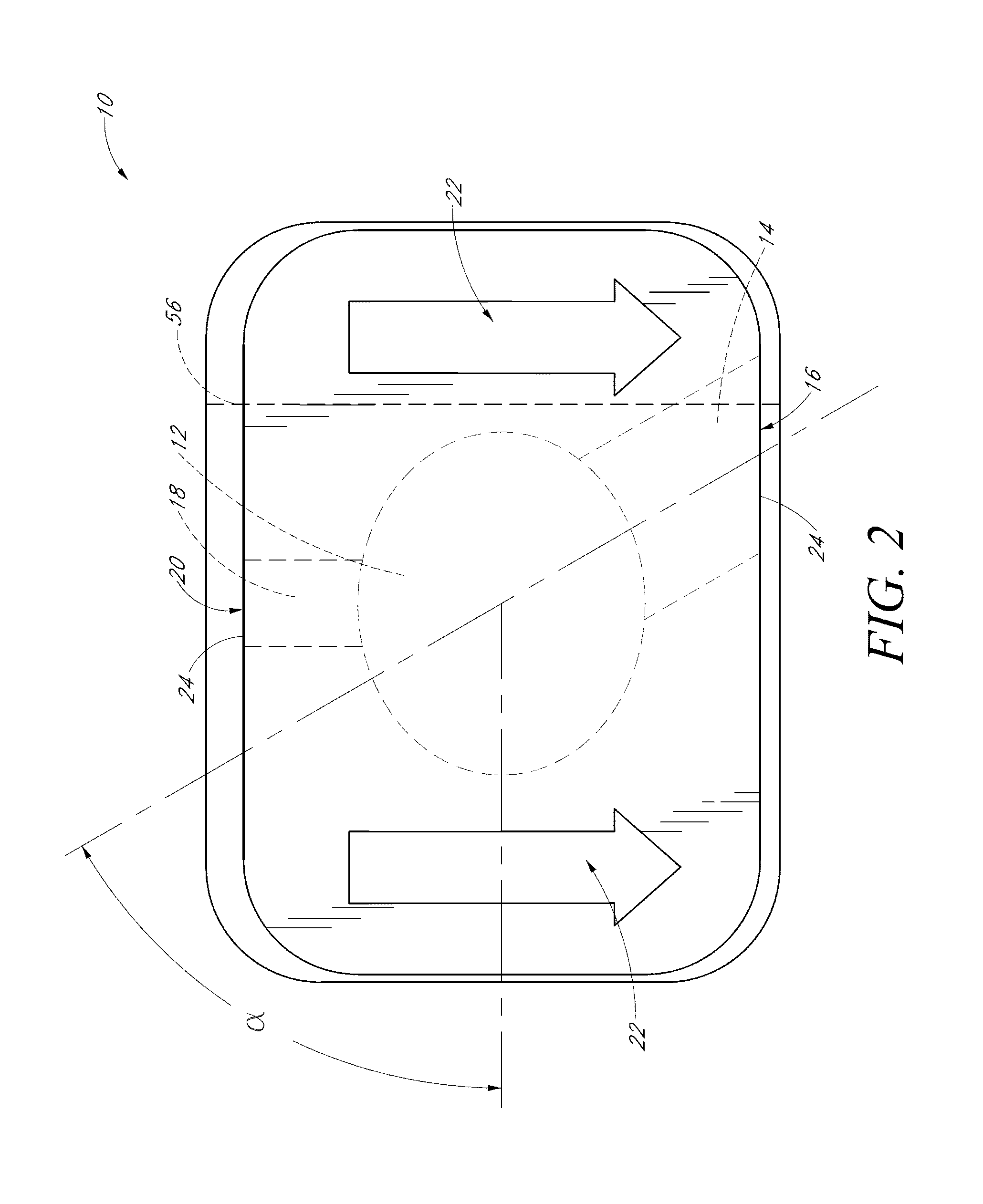Draining wound dressing
a wound dressing and wound technology, applied in the field of medical wound dressings, can solve the problems of increased time pressure associated with wound treatment, increased risk of infection, and increased risk of infection, and achieve the effect of effective shielding and quick and easy application over the wound
- Summary
- Abstract
- Description
- Claims
- Application Information
AI Technical Summary
Benefits of technology
Problems solved by technology
Method used
Image
Examples
Embodiment Construction
[0022]With reference to the drawings, several examples of devices will now be described in more detail. FIGS. 1 and 2 illustrate an embodiment of a wound dressing 10 that allows fluids and exudates from the wound to drain away from a wound site. In the illustrated embodiment, the wound dressing 10 has several layers on top of one another and has a generally rectangular shape with rounded corners when viewed from the top. The overall thickness of the device can advantageously be thin enough to provide the wound dressing sufficient flexibility to comfortably bend and stretch to conform to the patient's skin surface. In some embodiments, the overall thickness of the wound dressing can be less than approximately 0.15 mm and in some embodiments can be approximately 0.1 mm. In one example, the overall length can be approximately 168 mm and the overall width can be approximately 127 mm. However, many sizes and shapes can be used to suit particular applications and methods of manufacturing ...
PUM
 Login to View More
Login to View More Abstract
Description
Claims
Application Information
 Login to View More
Login to View More - R&D
- Intellectual Property
- Life Sciences
- Materials
- Tech Scout
- Unparalleled Data Quality
- Higher Quality Content
- 60% Fewer Hallucinations
Browse by: Latest US Patents, China's latest patents, Technical Efficacy Thesaurus, Application Domain, Technology Topic, Popular Technical Reports.
© 2025 PatSnap. All rights reserved.Legal|Privacy policy|Modern Slavery Act Transparency Statement|Sitemap|About US| Contact US: help@patsnap.com



